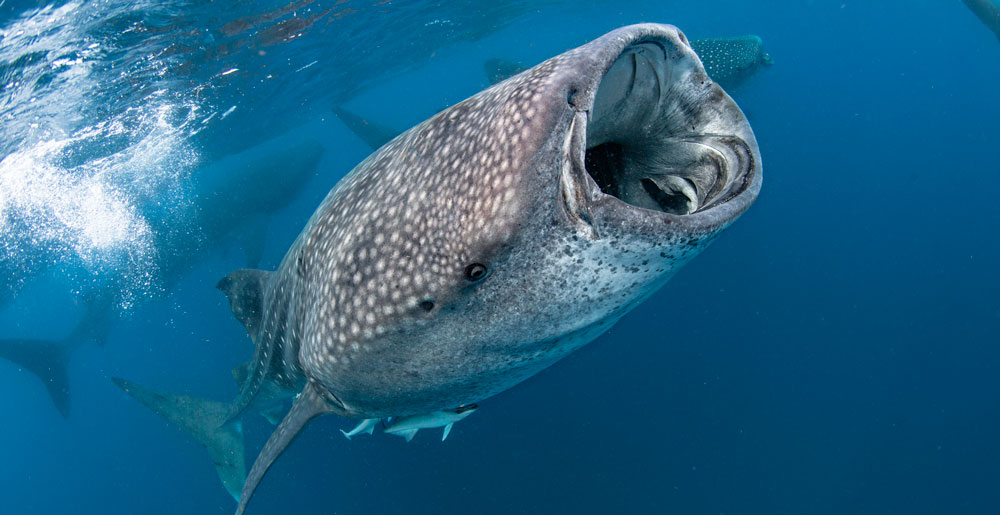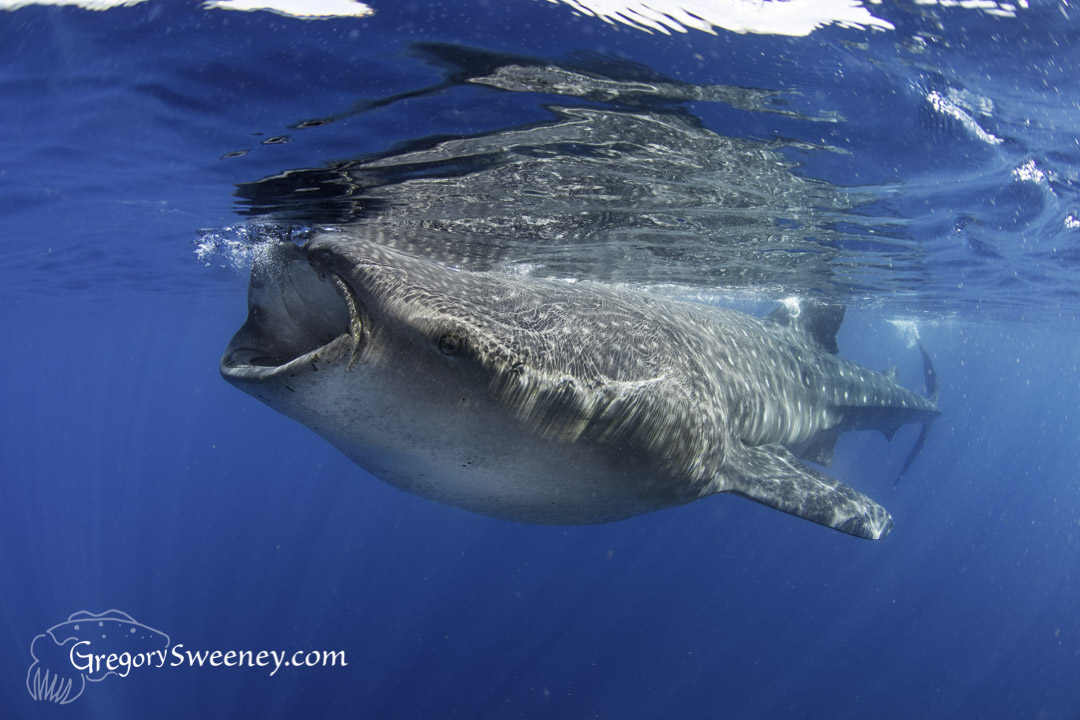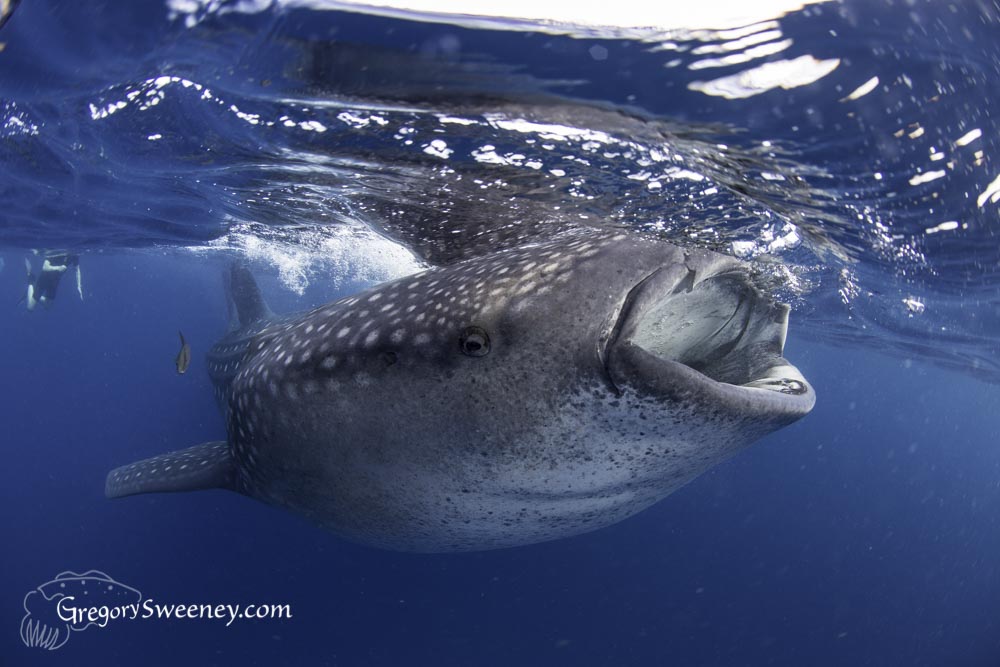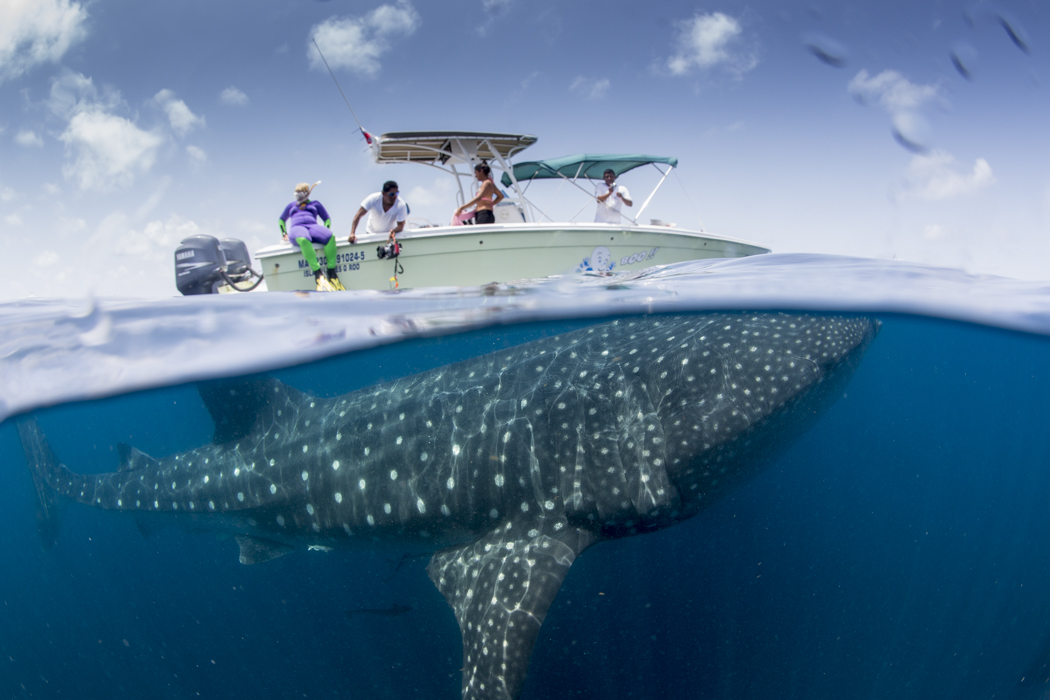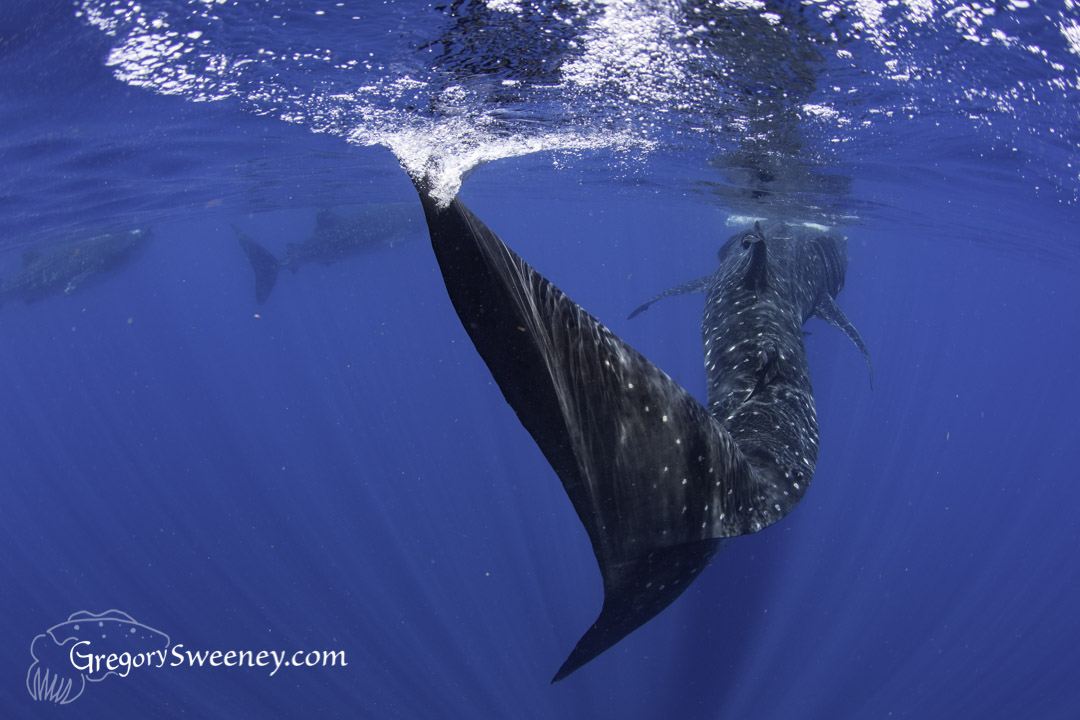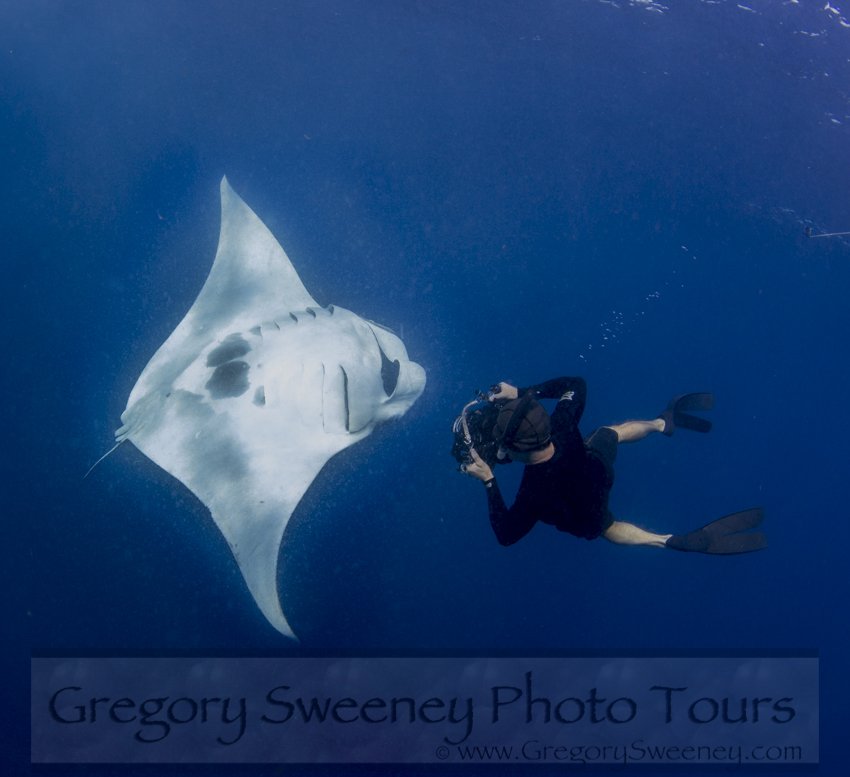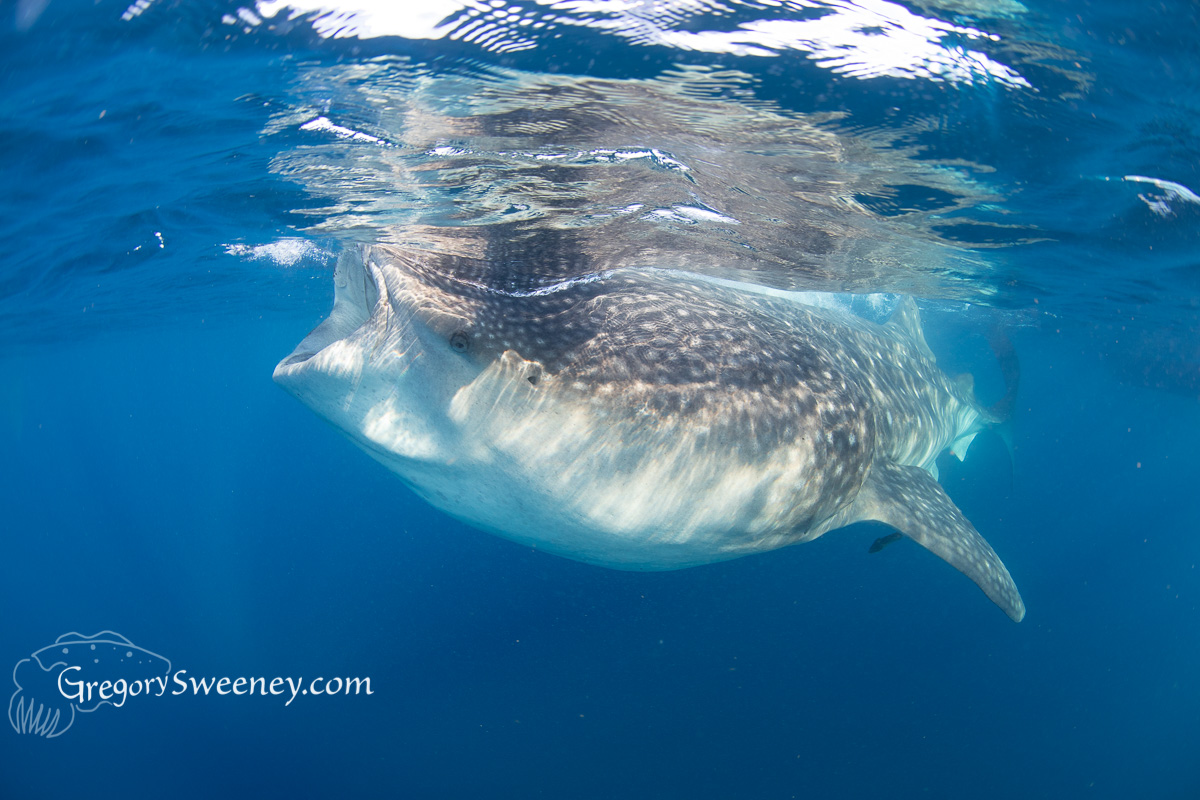
A Whale Sharks & Manta Photography Guide
Photography & Video tips, Equipment, Techniques, and Best Settings
Useful for photographers with DSLR, Mirrorless, Compact, and GoPro Cameras
Whale Sharks are the biggest fish in the sea and likely the largest living thing you have ever shared the water with. Even knowing how big they are and seeing them from the surface before getting in does not prepare you for the underwater experience: what is on the surface is only the tip (or fin) of the iceberg. Their casual effort at swimming and their tenacious feeding effort is an awesome experience and you will want to capture all of this plus your emotional response to their size in your photos. This guide will give you some pre-travel advise on how to prepare.
This guide is written based on my experiences with whale sharks in the Cancun region of Mexico at Isla Mujeres.
Join one of my Snorkel with Whale Sharks Trips
Divers, free divers, and snorkelers can also swim with whale sharks all over the world including Sea of Cortez Mexico, Ecuador’s Galapagos Islands, Honduras’ Utila, Cebu in the Philippines’, and Indonesia’s Cenderawasih Bay.
I have had many seasons of swimming with whale sharks to experiment and perfect techniques. I have changed techniques over the years as my cameras have evolved and my creative goals changed from year to year. With the addition of video to my DSLR camera and the rise of GoPros, I have allocated more in water time to video.
Photography Equipment for Photographing Whale Sharks
Safety equipment
A wetsuit/ floatation is required by the regulations. It also keeps the sun off and protects somewhat from marine creatures.
Consider a hood or lifeguard beanie for sun protection – a colored beanies is also a great safety device which will help the crew keep you in view if you get further afield.
Sunscreen, sunglasses, and coverups for on the boat.
Don’t forget a protective bag and sun coverup for your camera
Use a Fisheye Lens
Whale sharks are huge and it is possible to get close to the subject. Using a fisheye lens will let you get the whole fish in the image and capture some detail
DSLR
Select the widest lens you have – ideally a fisheye prime or fisheye zoom lens: both will give you up to a 180-degree field of view with a reduced minimum focus distance. When you get as close the shark as you can (without violating any regulations) you will get the whole thing in. Compared to photographing other moving subjects like dolphins and sailfish, the drag caused by your large dome port will not be a huge factor. Whale sharks are moving, but more at a walking pace than a running pace.
Fisheye lenses like a 10 – 17mm will be the most popular, especially on crop sensor cameras. Full frame shooters can use the lenses such as the Sigma 15mm or the Canon 8-15 circular fisheye.
Mirrorless
Underwater photographers using Olympus E-PL and OM-D cameras will opt for the popular 8mm fisheye lenses.
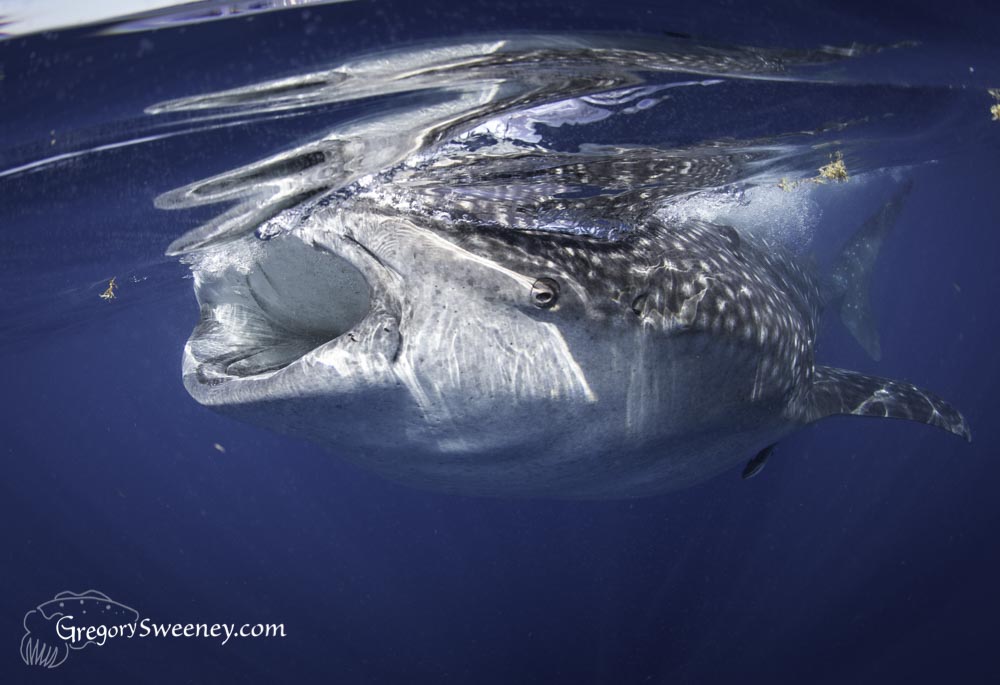
Compact Camera
Compact camera users will need to use a fisheye wet lens on top of their camera’s built-in lens.
The wet lens increases the field of view (up to 165 degrees). Without a wide lens, compact users will not be able to get the whole shark in the photo or be too far away: the wide angle lens reduces the minimum focal distance so the photographer can get much closer and still fit the subject into the frame.
Wet lenses require the user to check for and release bubbles around the wet lens each time you get in the water.
A compact camera or phone camera is a great addition for shooting fun shots, cultural features around town, and people. You can then leave your DSLR in the housing without worry about resetting o-rings and seals.
GoPro
GoPro shooters should be able to record great underwater photo and video of whale sharks without any additional lenses. The shallow depth and natural light mean that you will not need to add a red filter. You might want a polarizer for on the surface though. Using a handle or mount to hold the GoPro can help steady the shot, but beware of rules governing the use of “selfie sticks” – it is prohibited to use a stick to go closer to the animal than the rules allow and rules may have changed to prohibit them altogether.
Strobes
When snorkeling or freediving with whale sharks, strobes are often unnecessary given the amount of available light at the surface. It’s also against local regulations to use strobes in these situations for fear of startling or harming the animal. Make sure to ask your dive guide about the local rules.
The bulk of the strobes can hinder your swimming and the movement may make it difficult to keep them aimed properly with little time to fix them once you are face to face with the large subject that is coming straight at you.
You may wish to have a strobe for topside shots
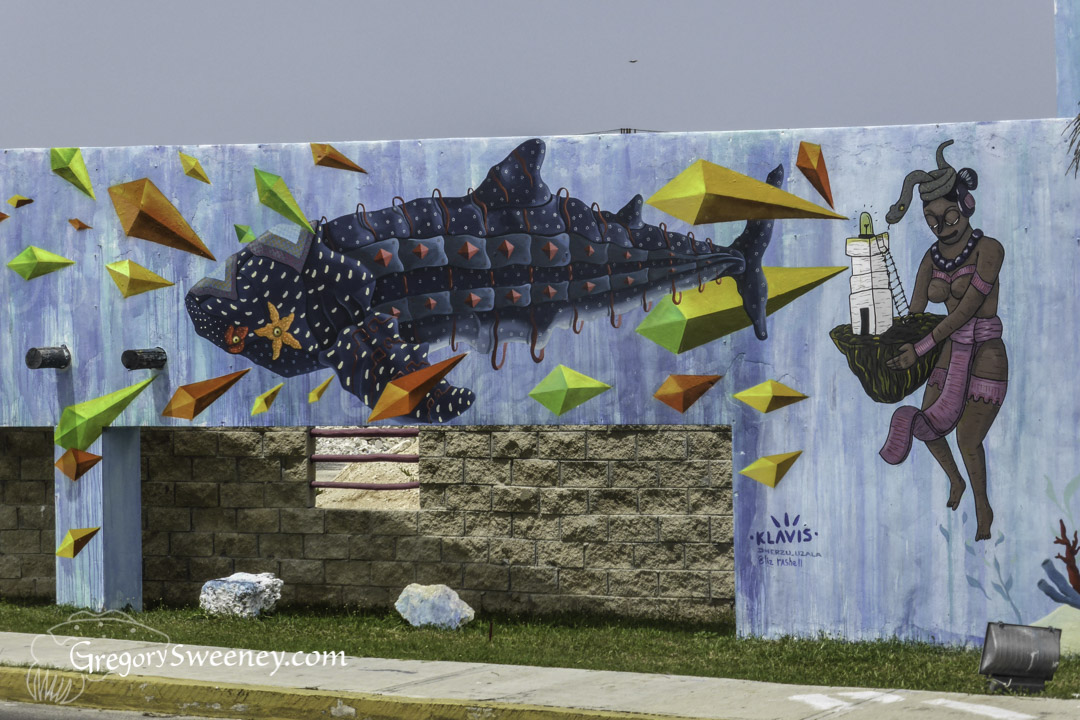
Settings
Exposure
DSLR, Mirrorless and Compact shooters have a number of shooting mode options to choose from.
My method is to start with some manual settings and change them as the daylight changes. Most of my images are at ISO400 with some ranging from ISO320 to ISO640 on cloudy days or when I go deeper under the surface (such as for mantas)
My shutter speed stays at 1/250sec or more . You must be able to shoot at a shutter speed fast enough to freeze the action.
Mostly I shoot manual adjusting the aperture to suit the conditions. Shutter Priority would be a 2nd choice to full manual
My Canon 5D IV has very good options for pattern metering mode.
Using the Ambient Light
I try to pick my subjects based on not shooting directly into the sun. This is not always successful, but if I can get a whale shark with the sun to my back it improves the chances for a great shot.
When swimming with whale sharks, you will want to be as mobile and nimble as possible. Since the whale sharks are feeding at the surface you can shoot entirely with ambient light. As stated before, strobes are not permitted and would slow you down anyway.
Shooting Techniques
The whale sharks are swimming they could change direction at any moment, so pay very close attention to their movement to avoid touching them or being run over.
When using the wide angle lenses such as those with 180 degree coverage, watch that your fins do not get in the shot!
You do not need great freediving skills, but being able to stay underwater at 2 – 10 feet will give you a shooting angle of slightly upward and can help mitigate the effects of very bright and direct light.
Practice before your trip to increase your underwater time and clearing your ears. Even breath holding exercises on land can help you be prepared for the day.
Being able to freedive to 20 feet will give you the options of silhouettes and sun burst shots.
Mantas: When we find mantas they are in smaller groups. They also move in circles or random directions up and down and parallel to the water surface. You will need to swim faster and be ready to change depth. They will spook and run away if you get too close. They best compositions are made by getting in front of multiple rays feeding a a line (“train”) and let them come toward you getting shots starting when they are still too far and then getting the last right before moving out of the way. If you move at the right time you can follow up with a side shot as they swim by..
Types of Images to Try
Behavior
Catching the wide open mouth during feeding either from the front, side, or ¾ angle
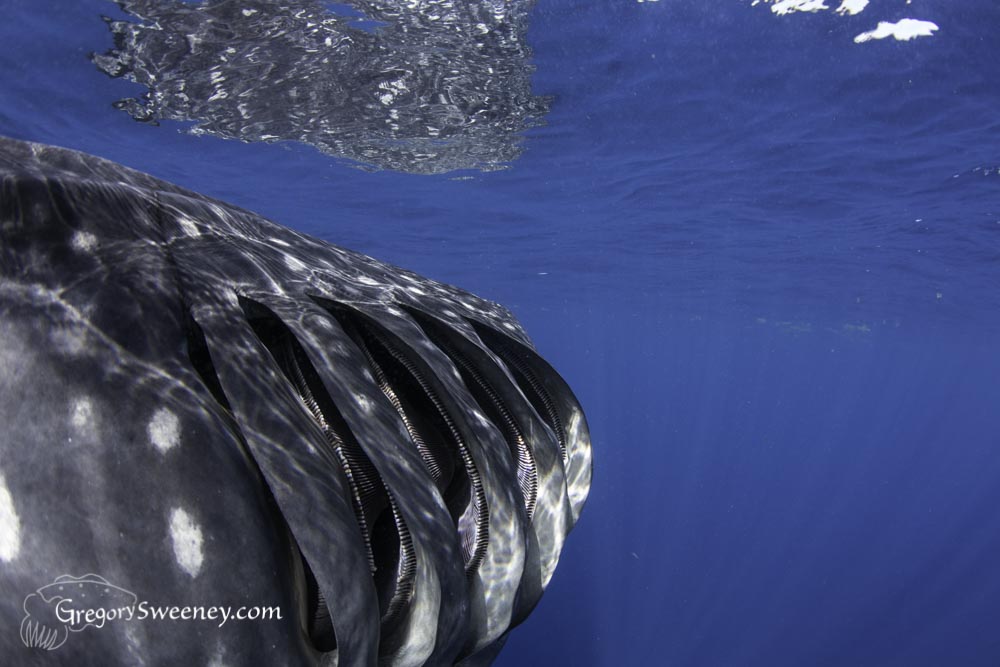
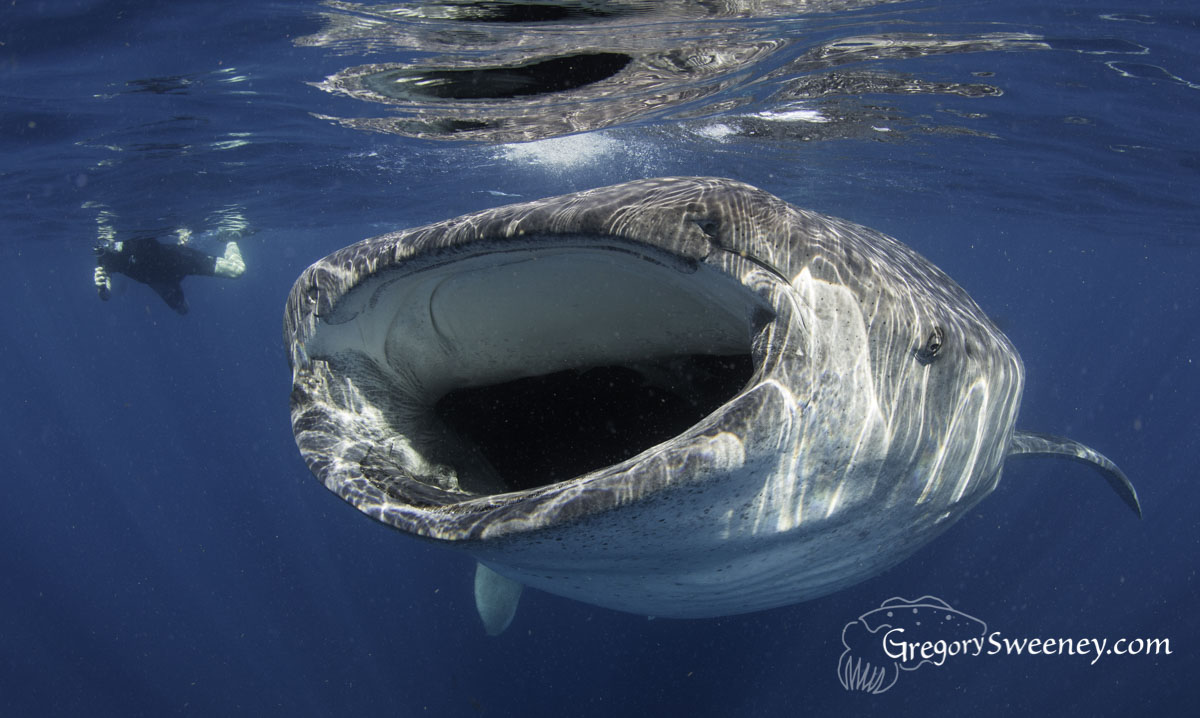
Add drama to the feeding image by getting details of the water flowing into the mouth
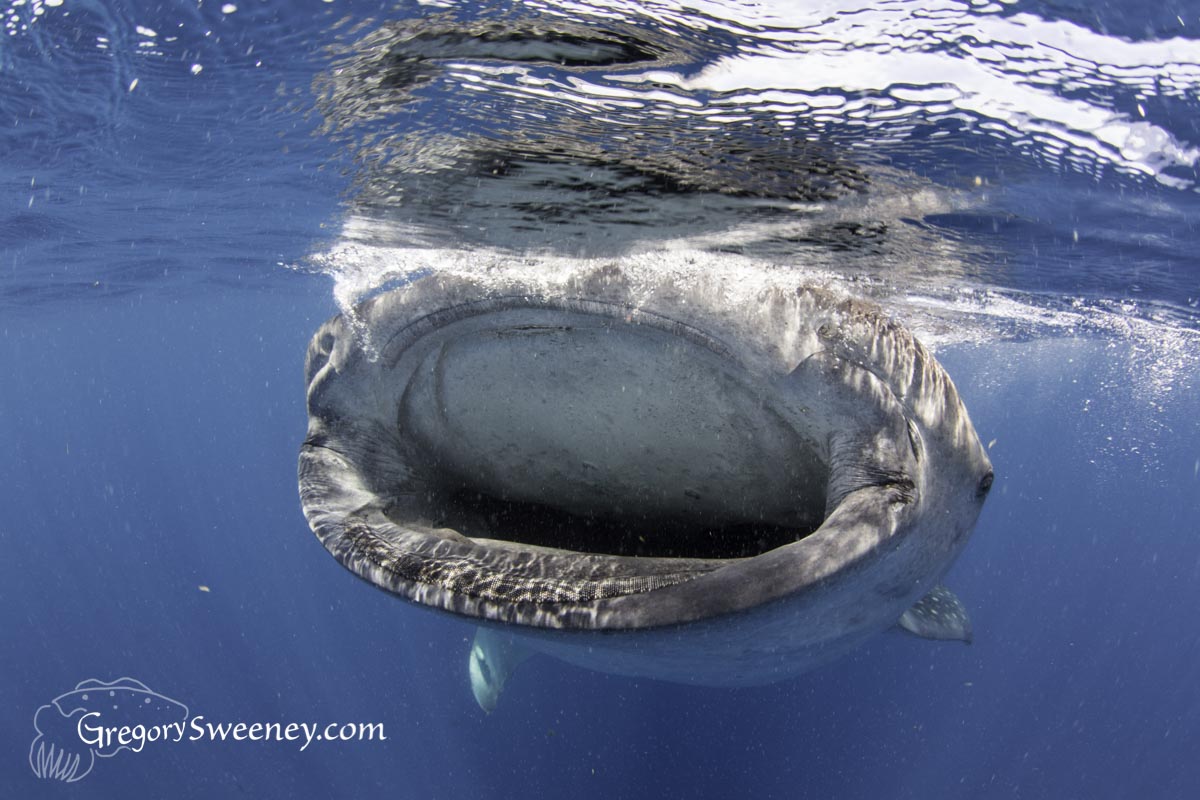
Position yourself ahead of the shark and wait for it to approach. While photographing, move off to the side to get ¾ angle as it goes by. If it is too late to move, quickly submerge and swim to the side letting it pass over you. You do not want to get “bonked” – those fins are hard and rough.
One of the most dramatic images you can take of a whale shark is with its mouth wide open in the middle of feeding. This is common in Isla Mujeres, where the sharks shift into a vertical position to feed, called a “botella.” You will use every bit of your wide lens to capture this. The good part is that they are not moving while in this position.
Above and Below
When photographing the whale shark near the surface, try capturing a split shot with the fish underneath and the topside scene above. In some cases, the above subject might be boring: Just clouds or sky. But in other locations, you may be able to capture unique interaction with fishermen, either in a boat or on a floating platform.
Make a Complete and Varied Portfolio
Make sure to thoroughly describe your subject in both shape & form and behavior.
Check list: Front, ¾, side, below, above, tail shot

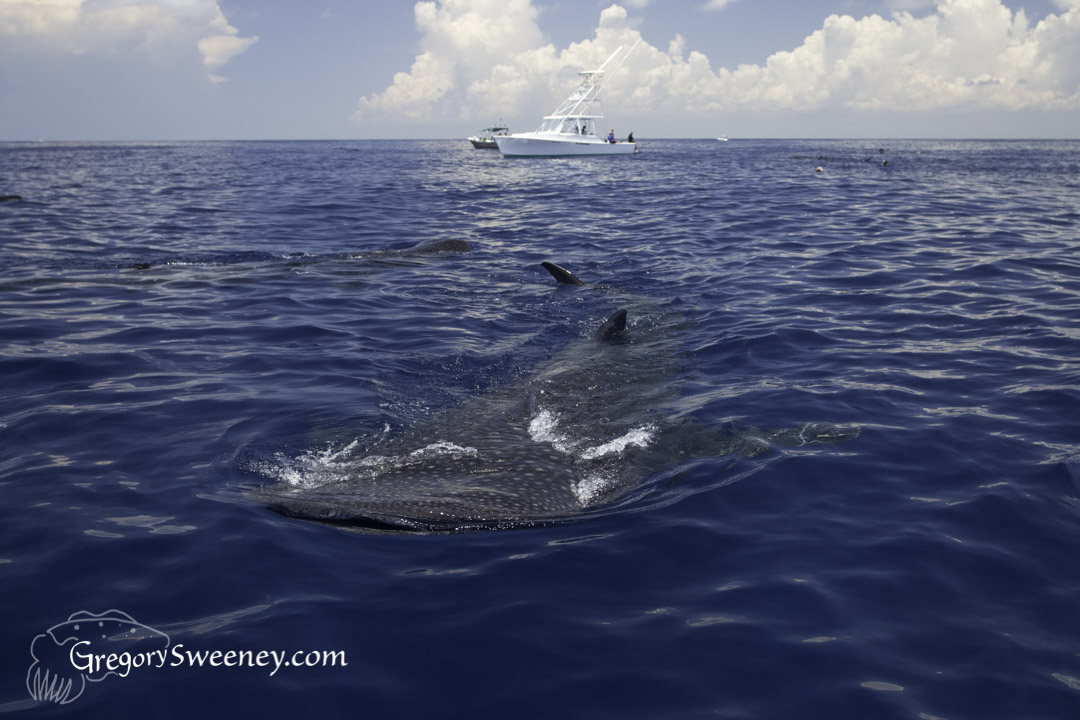

You will get chances to get a tail shot as the whale shark swims past you into the distance.
Getting lower in the water, looking up that the subject adds variety and drama to your image collection.
If a whale shark is below the surface, get an image of its back from above. The spots are one of the most interesting features of the whale shark.
Shoot Silhouettes
Shooting up at the whale sharks creates a beautiful image. A whale shark is a unique shape (negative space) which makes a very interesting from above or from below shot. To capture a sunburst, make sure to stop down your aperture (f8 on compact, f18 on mirrorless, f22 on DSLR) and use a fast shutter speed to trim the amount of light getting in.
Take images with people as part of the composition
Remove distracting elements such as other people in water by moving off to a whale shark with no other people around it. There are usually enough sharks around for everyone to get their own without getting too far from the boat.
Use a person for a sense of scale, but be careful to have them isolated against the water, not positioned between you and the whale shark so as to cover part of the subject. The best compositions will have the whale shark with a person below and behind or in front of the approaching whale shark.
Try adding a person to a silhouette. This will take some consultation with your model and a plan with signals and most likely several tries to get it right.
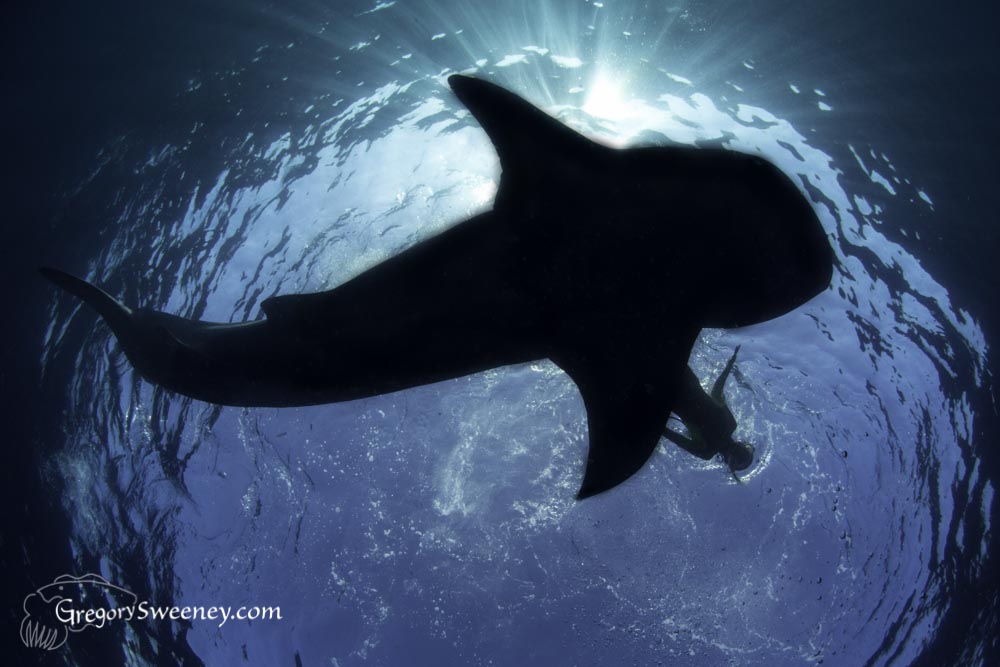
Whale Sharks are easily accessible and comparatively easy large marine subjects to photograph
The techniques are easily practiced and perfected while on my Whale Shark Photography Workshop. With 4 days on the water we can experience all light conditions and move around to find the best areas of the aggregation and even search for mantas feeding on the same food patches. Back at the hotel, photographers have time and a safe place to download and review photos. Shots missed can be attempted the next day and successes shared with others to inspire their next days shooting. The little amount of equipment needed and streamlined snorkel kit make this trip easy to pack for. Abundant wildlife and the welcoming and fun nature of Isla Mujeres make this trip a must do for all underwater photographers.
Information about my Whale Shark and Manta Trips (and all of my photography trips) can be found on www.GregorySweeney.com

